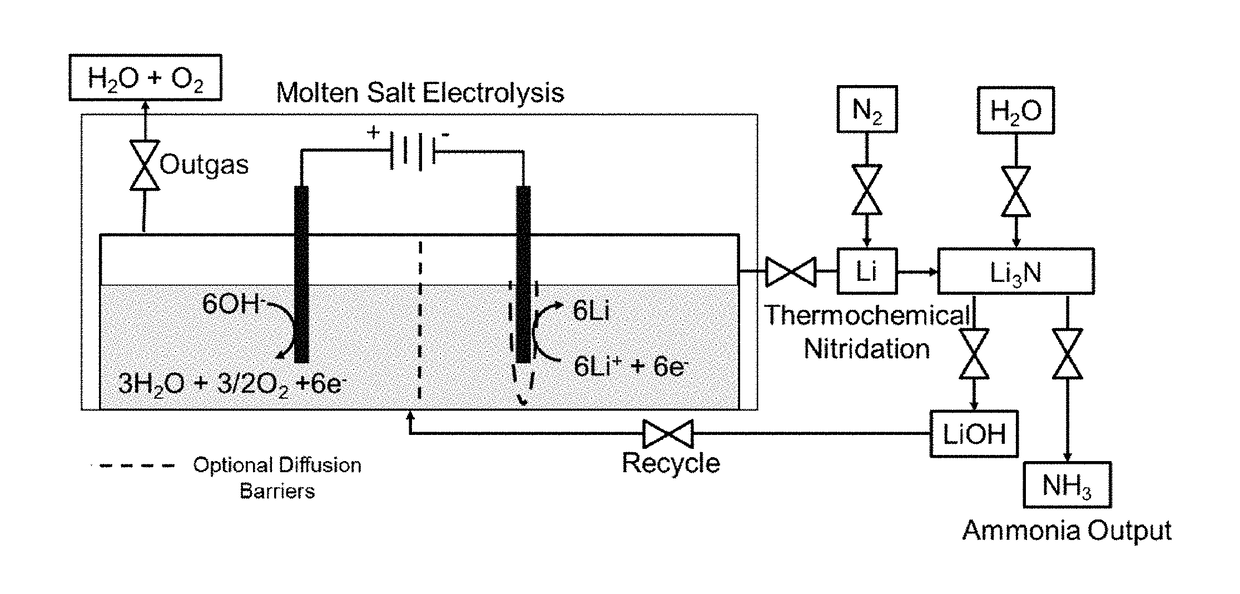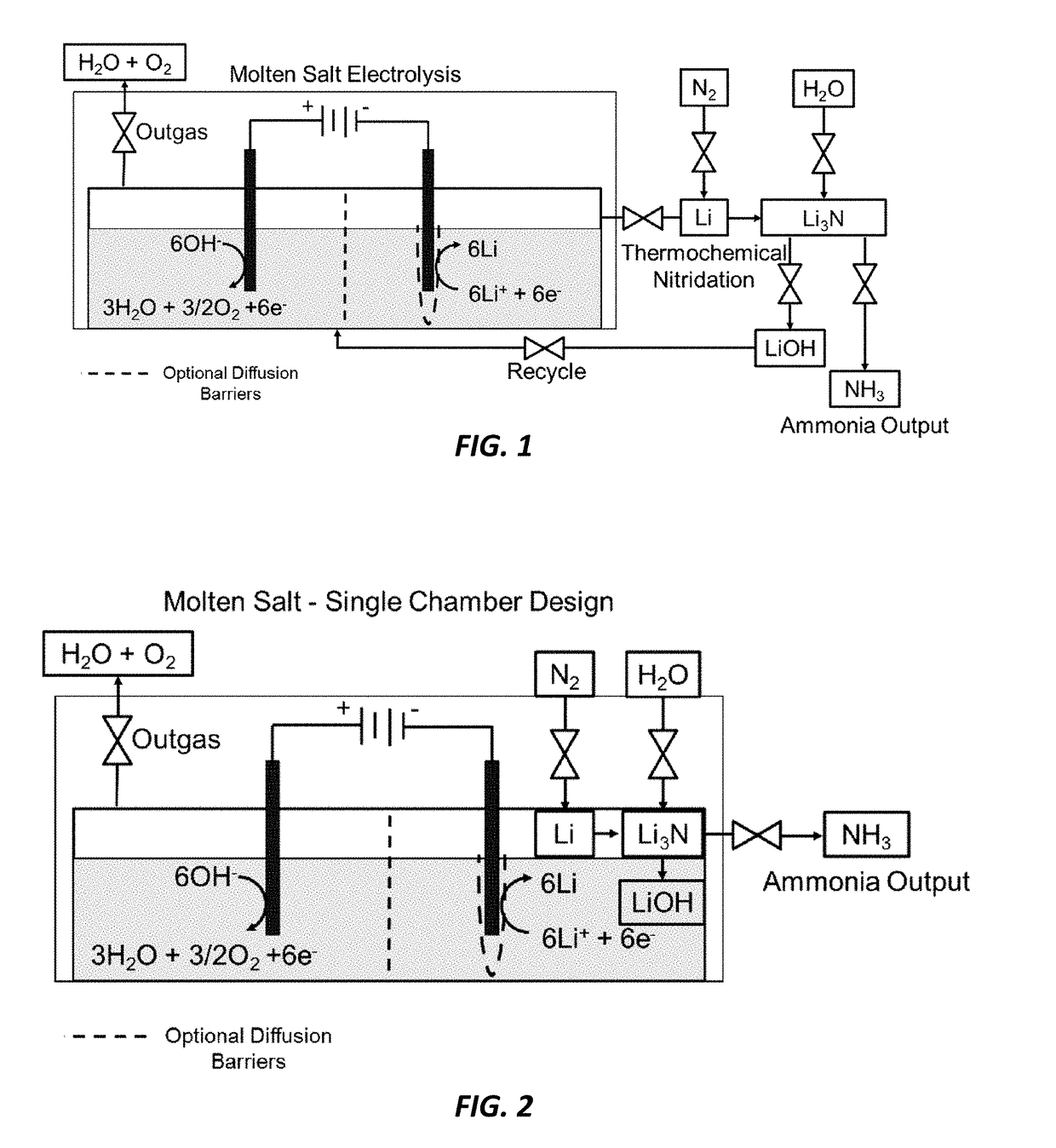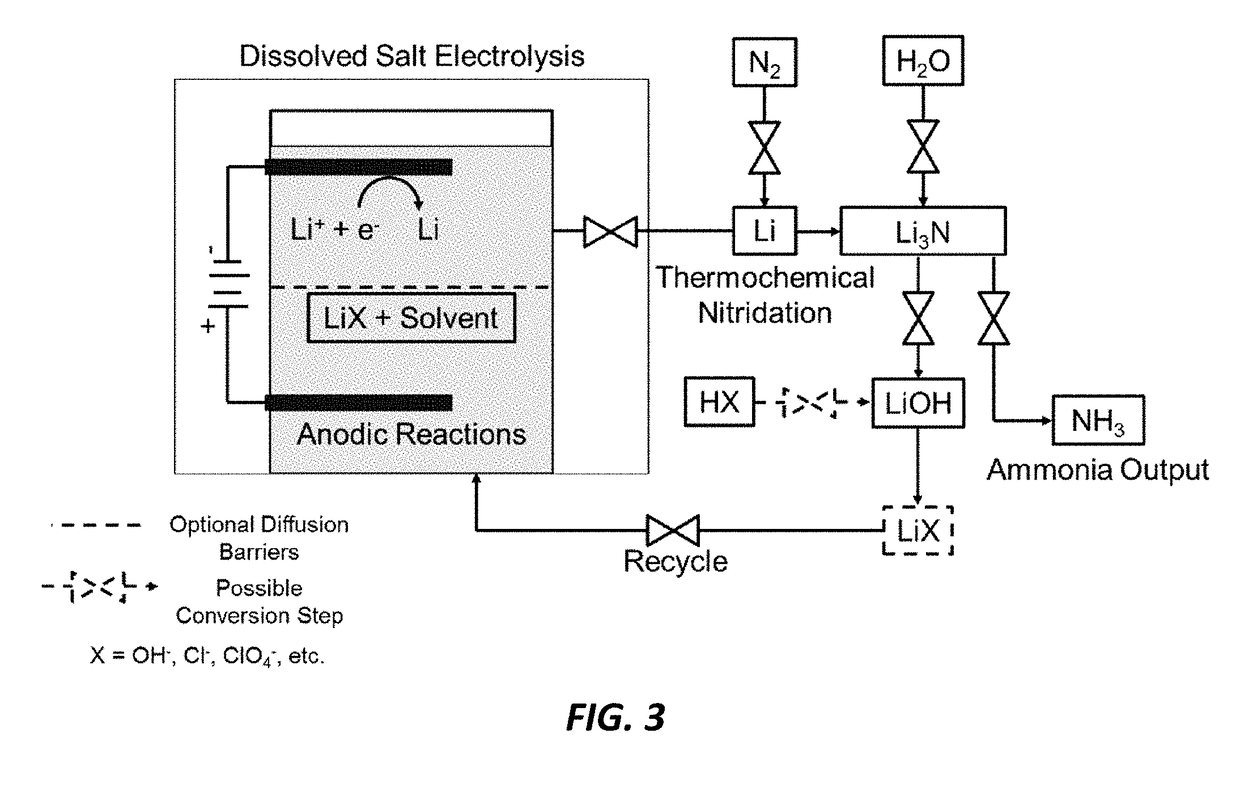Electro-thermochemical Li Cycling for NH3 Synthesis from N2 and H2O
a technology of li cycling and nh3 is applied in the field of ammonia production, which can solve the problems of 150 million metric tons of ammonia, consuming over 1% of the entire global energy supply, and affecting the stability of these catalysts, so as to reduce the melting point of the molten metal compound mixture, reduce the melting point, and reduce the melting point
- Summary
- Abstract
- Description
- Claims
- Application Information
AI Technical Summary
Benefits of technology
Problems solved by technology
Method used
Image
Examples
Embodiment Construction
[0020]The current invention reduces the capital investment required for ammonia production. There is a substantial market for ammonia (over 100 million tons / yr) and it is projected to grow with population. It is used for the production of fertilizers, as an energy storage chemical or fuel, and in the production of other nitrogen based industrial chemicals such as hydrazine, nitrous oxide and nitric acid. The Haber-Bosch process is the current industrial standard and requires over 1% of the entire global energy supply and 3-5% of the natural gas supply for pre-requisite hydrogen production. The high pressures and temperatures used in this process require large, centralized plants. The current invention is a lower impact alternative to the industrial standard Haber-Bosch and provides several cost competitive advantages. The current invention uses water rather than hydrogen gas as the hydrogen source and will therefore reduce hydrogen gas and fossil fuel demands for any application. Th...
PUM
| Property | Measurement | Unit |
|---|---|---|
| Melting point | aaaaa | aaaaa |
Abstract
Description
Claims
Application Information
 Login to View More
Login to View More - R&D
- Intellectual Property
- Life Sciences
- Materials
- Tech Scout
- Unparalleled Data Quality
- Higher Quality Content
- 60% Fewer Hallucinations
Browse by: Latest US Patents, China's latest patents, Technical Efficacy Thesaurus, Application Domain, Technology Topic, Popular Technical Reports.
© 2025 PatSnap. All rights reserved.Legal|Privacy policy|Modern Slavery Act Transparency Statement|Sitemap|About US| Contact US: help@patsnap.com



